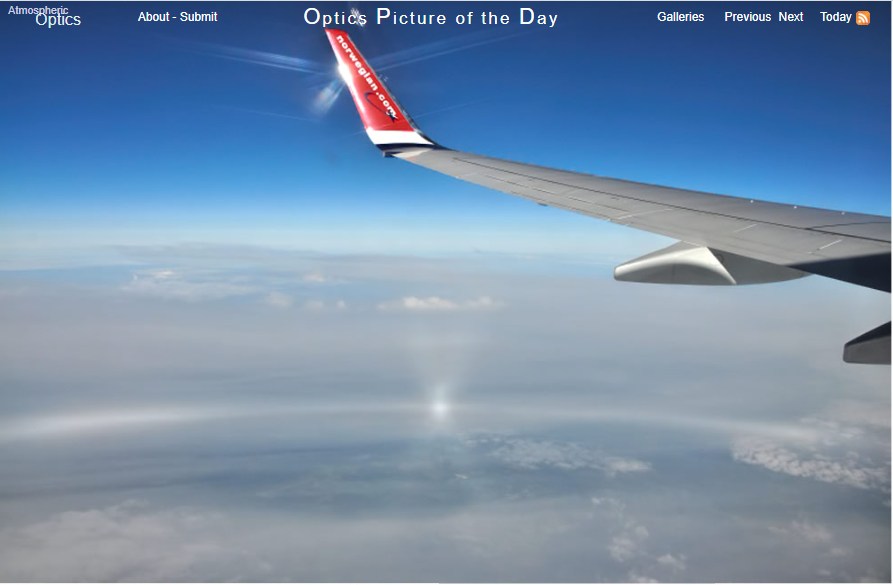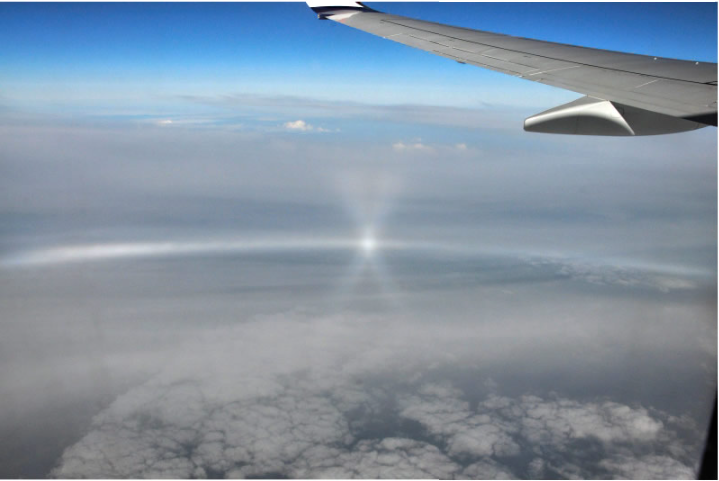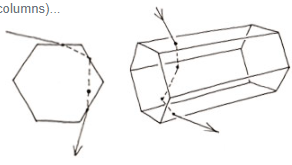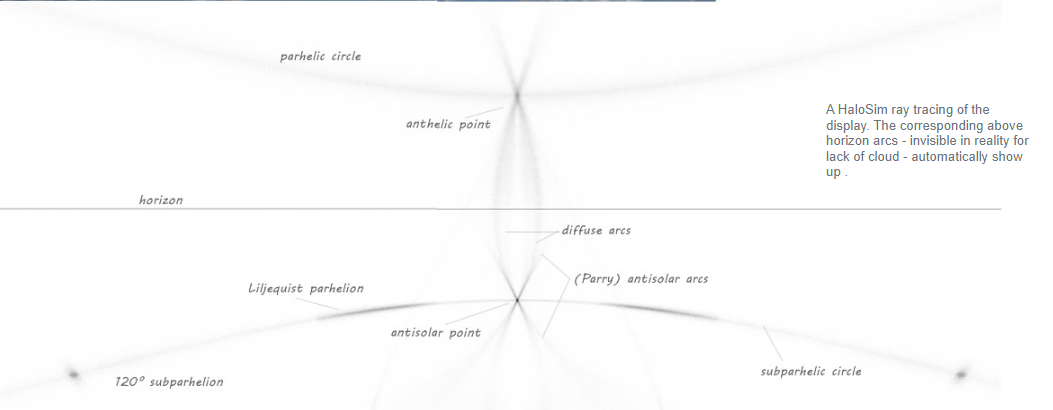Subhorizon Halos - OPOD
Subhorizon Halos: A Rare and Captivating Atmospheric Phenomenon
Have you ever gazed at the sky and been mesmerized by the beauty of atmospheric optics? The natural world never ceases to amaze us with its wonders, and one such wonder is the phenomenon of subhorizon halos. These rare halos, which occur below the horizon, are a sight to behold. In this article, we will delve into the intriguing world of subhorizon halos and explore their formation, characteristics, and the fascinating images captured by Gabor Pete over the Gulf of Riga.
Subhorizon halos are primarily formed by an extra reflection within each halo-forming crystal. These crystals, suspended in the atmosphere, play a crucial role in the creation of these captivating optical displays. While we are more accustomed to observing halos above the horizon, subhorizon halos offer a unique perspective that is rarely seen. Let's take a closer look at some of the specific types of subhorizon halos captured by Gabor Pete in his remarkable images.
Sub-Liljequist Parhelia: A Stunning Display of Brightenings
In one of the images taken by Gabor Pete, we can observe a subparhelic circle with brightenings at its left and right. These brightenings are known as sub-Liljequist parhelia and are formed by plate crystals. The orientation of these plate crystals gives rise to these mesmerizing features. The sub-Liljequist parhelia add an extra layer of complexity and beauty to the subhorizon halo display.
Parry Antisolar Arc and Diffuse Arcs: A Dance of Light
At the center of another image, we can witness a captivating cross-like structure. This intricate pattern is believed to be a combination of a Parry antisolar arc, formed by Parry-oriented columns, and 'diffuse arcs' originating from ordinary singly oriented columns. The interplay between these different types of arcs creates a dance of light that is both enchanting and mysterious.
The Rare 120° Subparhelion: A Sight to Behold
Perhaps the rarest sight of all captured by Gabor Pete is the image showcasing a 120° subparhelion. Plate crystals are responsible for the formation of 120° parhelia, but for the subparhelion to be bright enough, the plates need to be relatively thick or have a triangular aspect. This allows the internal reflections from adjacent side faces to create the subparhelion, adding an extra touch of magic to the subhorizon halo display.
Exploring the HaloSim Ray Tracings
To gain a deeper understanding of the subhorizon halo display captured by Gabor Pete, let's explore the HaloSim ray tracings. These ray tracings provide a simulation of how the above-horizon arcs would appear if there were clouds present. While these arcs are invisible in reality due to the absence of clouds, the ray tracings give us a glimpse into the full extent of the optical phenomena at play.
Captivating Images of Subhorizon Halos
Gabor Pete's images of subhorizon halos over the Gulf of Riga are truly breathtaking. They showcase the beauty and complexity of these rare atmospheric optics phenomena. The images not only serve as visual delights but also provide valuable insights into the formation and characteristics of subhorizon halos. Gabor Pete's skillful photography allows us to appreciate the intricate details and ethereal nature of these captivating displays.
Conclusion
Subhorizon halos are a rare and captivating atmospheric optics phenomenon that adds a touch of wonder to our skies. The images captured by Gabor Pete over the Gulf of Riga offer a glimpse into this elusive world of optical beauty. From sub-Liljequist parhelia to the dance of light created by Parry antisolar arcs and diffuse arcs, and the awe-inspiring 120° subparhelion, subhorizon halos never fail to captivate our imagination. Next time you find yourself gazing at the sky, remember to keep an eye out for these mesmerizing displays that occur just below the horizon.

Subhorizon Gems
Rarely seen subhorizon halos imaged by Gabor Pete over the Gulf of Riga.
All images ©Gabor Pete shown with permission
A HaloSim ray tracing of the
Halos below the horizon are mostly the result of an extra reflection within each halo forming crystal.
A subparhelic circle crosses the top image. Its brightenings at left and right are sub-Liljequist parhelia formed by plate crystals.



At image centre the cross is (it is always hard to identify the main contribution) some combination of a Parry antisolar arc (Parry oriented columns)...

....and 'diffuse arcs' from ordinary singly oriented columns.

 At left is perhaps the rarest sight of all - a 120° subparhelion.
At left is perhaps the rarest sight of all - a 120° subparhelion.
Plate crystals form 120° parhelia. For bright ones the plates need to be rather thick or of triangular aspect to permit the ray with internal reflections from adjacent side faces.
An additional internal reflection from the lower basal face produces the subparhelion.

A HaloSim ray tracing of the display. The corresponding above horizon arcs - invisible in reality for lack of cloud - automatically show up .
Note: this article has been automatically converted from the old site and may not appear as intended. You can find the original article here.
Reference Atmospheric Optics
If you use any of the definitions, information, or data presented on Atmospheric Optics, please copy the link or reference below to properly credit us as the reference source. Thank you!
-
<a href="https://atoptics.co.uk/blog/subhorizon-halos-opod/">Subhorizon Halos - OPOD</a>
-
"Subhorizon Halos - OPOD". Atmospheric Optics. Accessed on November 21, 2024. https://atoptics.co.uk/blog/subhorizon-halos-opod/.
-
"Subhorizon Halos - OPOD". Atmospheric Optics, https://atoptics.co.uk/blog/subhorizon-halos-opod/. Accessed 21 November, 2024
-
Subhorizon Halos - OPOD. Atmospheric Optics. Retrieved from https://atoptics.co.uk/blog/subhorizon-halos-opod/.